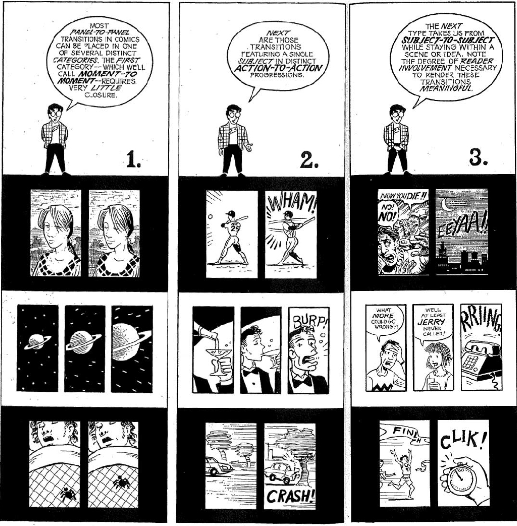Blog Prompt: The art of cinema involves the manipulation of the viewer’s experience of time. The duration of a shot is like a temporal framing. In “Time Frames”, McCloud describes the various comics techniques for creating different temporalities. Reading McCloud, consider the framed panel in a comic as a cinema shot. Wider or longer panels are like shots with longer durations (“long takes”). Smaller panels are like shots of shorter durations. The main difference between comics and film is that with a page of arranged panels, the reader has a spatial “time map” in the simultaneous display of frames. In cinema, shots are mostly sequential and present an unfolding now. Discuss some aspect of McCloud’s visual essay that makes you think of the possibilities of time manipulation in digital cinema or of a certain movie scene that plays with time.

Some of the key points regarding time manipulation in comics and digital cinema, inspired by Scott McCloud’s “Time Frames,” include filmmakers’ experiments with non-linear storytelling, flashbacks, and the blurring of traditional boundaries. Opening up new storytelling possibilities really allows for more complex narratives and engaging ways to captivate viewers, enriching the experience. Another fascinating insight into time manipulation is how comics provide readers with a “time map” that enables them to see past, present, and future frames simultaneously. This offers a unique way of experiencing time. Digital cinema approaches this differently. Directors and editors begin to experiment with non-linear storytelling techniques, parallel editing, flashbacks, and the use of digital effects to alter the perception of time.
